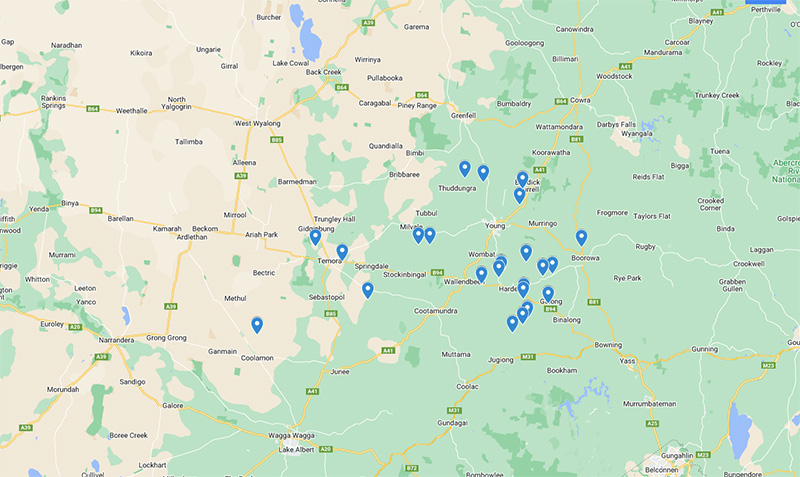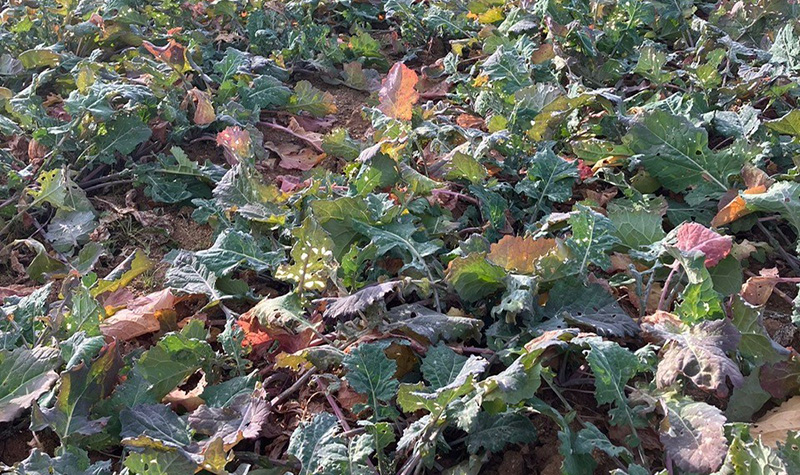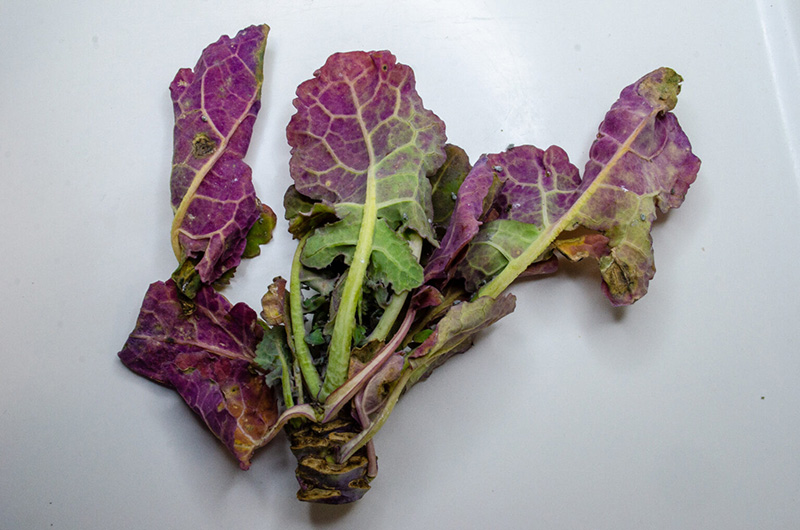Paddock Practices: Growers called to monitor for green peach aphids and signs of virus
Paddock Practices: Growers called to monitor for green peach aphids and signs of virus
Date: 14 Jun 2024

Key points
- An outbreak of green peach aphid has been reported in canola fields across the Riverina, Southern Tablelands, South West Slopes and the Central West Slopes of NSW.
- Green peach aphids transmit the turnip yellows virus (TuYV; formerly called beet western yellows virus), which can reduce the yield and quality of canola crops.
- With many canola crops still in early growth stages, the decision to spray insecticides is delicate and potentially costly, made even more important due to the growing problem of insecticide resistance.
- In virus-prone areas, growers are recommended to monitor aphid activity closely, particularly along field edges to detect aphid movement, and ensure correct identification of green peach aphids before making any spray decisions.
What’s driving the aphid outbreaks?
During autumn and early winter, green peach aphids migrate into newly sown winter crops from green bridges – the weeds and volunteer crop plants that act as hosts between seasons.
This year, a mild autumn has potentially led to early and prolonged aphid activity. Moreover, the wetter-than-average conditions earlier across parts of NSW and the central and southern parts of Victoria have contributed to the formation of green bridges.

What are we seeing?
Green peach aphids have been reported in moderate-high numbers in regions around Canowindra, Cowra, Young, Boorowa, Yass, Harden, Wagga Wagga, Coolamon and Jerilderie.
The heaviest infestations are typically being found in early sown canola crops, which is potentially the result of early aphid activity coinciding with canola plants no longer being protected by insecticide seed treatments.
Aphid numbers being observed are variable; in some cases, crops have had 5-10 winged adults and 20-30 nymphs per leaf on most plants.
While not all infestations have been this severe, some fields are showing signs of TuYV and the presence of green peach aphids raises concerns about virus transmission.
In response, Cesar Australia has tested canola samples as well as green peach aphids from more than 25 locations. This includes samples collected near Jugiong, Boorowa, Harden, Galong, Young, Thuddungra, Milvale and Temora. Most of these samples have tested positive for TuYV.
Though similar issues have not been widely reported further south in Victoria, or in other parts of New South Wales, it will be important to actively monitor canola crops for aphids and signs of virus over the coming weeks.

Green peach aphid and turnip yellows virus
Green peach aphids are the primary vector for TuYV, with an exceptionally high transmission efficiency of 96 per cent. Aphids acquire TuYV from an infected plant and transmit it to a healthy plant by feeding on the phloem. Once acquired, the aphid carries TuYV for the rest of its life. Radish, capeweed, volunteer canola, mallow, and turnipweed are common hosts for both the green peach aphid and TuYV.
During summer, the virus survives in green bridges, and is then carried into crops by aphids. Once a plant is infected with TuYV, there is no cure. Unlike fungal diseases, chemical treatments are ineffective against viral infections.
TuYV is a serious disease of canola, causing plant stunting, reddening/purpling, yellowing and stiffing of lower leaves, and can reduce crop yields anywhere from 10% to 80%. The earlier a canola plant is infected, the greater the potential yield loss.
TuYV can also infect several pulse crops, including chickpeas, lentils, field peas, lupins and faba beans.
Chemical controls
The only effective management option for TuYV post-sowing is to use insecticides, whereby the main goal of control is to minimize virus transmission during vulnerable crop growth stages.
There are no fixed economic thresholds for managing the incursion of aphid-vectored virus, making it challenging to determine whether spraying is necessary. Complicating matters, foliar insecticide applications must be timely due to the rapid spread of green peach aphid in canola crops. It is common for sprays to occur too late to prevent virus spread.
However, several factors should be considered before resorting to chemical control.
Green peach aphid has evolved resistance to various chemistries, including organophosphates, synthetic pyrethroids, neonicotinoids and carbamates. Some populations in WA, Queensland, NSW, Victoria and SA also have low-level resistance to sulfoxaflor (Transform™).
Metabolic resistance to neonicotinoids shortens the effectiveness of insecticide seed treatments applied to canola, allowing green peach aphids to colonize crops sooner after emergence. Thus, regular monitoring for aphid activity is essential, even when using seed treatments.

What to do?
In virus-prone areas, growers are recommended to monitor aphid activity closely, particularly along field edges to detect aphid movement, and ensure correct identification of green peach aphids before making any decision to spray.
Also, look out for TuYV symptoms: red, yellow, or purple discolouration, particularly on the edges of older leaves. These colours are typically more intense between leaf veins and on the upper side of the leaf.
Spraying decisions will vary by region; areas with previous widespread virus outbreaks face higher risks, particularly in those parts of southern New South Wales where high levels of TuYV have been identified.
Where chemicals are required to control green peach aphids, experts are advising a single application of flonicamid (Mainman®), afidopyropen (Versys®) or sulfoxaflor (Transform®). If multiple sprays are needed, it is recommended to rotate between these products as part of a resistance management plan.
These chemicals are more likely to be effective given the lack of, or limited, resistance in green peach aphid. Additionally, they are softer to beneficial insects than their broad-spectrum counterparts, especially flonicamid and afidopyropen. Beneficials, such as hoverfly larvae, lacewings, ladybird beetles, damsel bugs, and parasitoid wasps, help keep green peach aphid populations in check.
Additionally, opting for a softer chemical could be the game-changer in whether or not a wave of secondary pests, like cabbage aphids or diamondback moth, occurs later in the year.
Chemistry insights and application tips
If you’re interested in the nitty gritty details, Mainman® shuts down aphid feeding and virus transmission within an hour of exposure and causes mortality within 2–5 days. Versys® prevents feeding and virus transmission within minutes, with similar mortality timing. There is no known resistance to either Mainman® or Versys® in green peach aphids in Australia.
Transform™ exhibits activity on contact, as well as systemic movement in the plant. However, Transform™ shows only acropetal movement (i.e. it moves upwards in the xylem or stem) and does not translocate downwards. When using Transform™ to control green peach aphids, it is essential that the product is applied as per label recommendations and that thorough coverage is achieved.
In situations where spray coverage may be compromised, it is advisable to use the high label rate of Transform™ (100 g/ha) when targeting green peach aphids in canola.
According to Dr Rob Annetts (Corteva Agriscience), extensive trial work has demonstrated that the lower label rate (50 g/ha) will be sufficient to control green peach aphids infesting young canola crops when applied correctly – assuming high water volumes, correct nozzle selection and appropriate ground speeds are adhered to.
Pirimicarb (e.g. Pirimor WG) is registered to control green peach aphids in canola, however its effectiveness may be compromised due to resistance in many areas and the current cooler temperatures. Best control with pirimicarb is achieved when applied between 20-30°C.
Make sure you’re following all directions for use on product labels and ensure that spray rigs are properly calibrated to achieve good coverage, especially in dual-purpose canola crops with dense canopies.
Acknowledgements
The content for this Paddock Practices was originally written by Lilia Jenkins, Paul Umina and Samantha Ward of Cesar Australia and was first published on the Cesar Australia website as Concerns of turnip yellows virus (3 June 2024). Field reports and technical advice provided by the DeltaAg advisory team, Tim Condon, Harry Wakefield, Kara Bryant, Angus Malmo and Rob Annetts.
Useful resources
- Cesar Australia resources
- Concerns of turnip yellows virus (3 June 2024)
- Video: Green peach aphid identification (26 Oct 2020)
- GRDC podcast
- GRDC Update paper
- GRDC publications
- Green peach aphid best management practice guide (southern) (1 Feb 2020)
- Fact Sheet: Resistance management strategy for the green peach aphid in Australia grains (1 Jul 2015)
Contacts
Paul Umina
Director, Cesar Australia
pumina@cesaraustralia.com
03 9349 4723
GRDC Project Code: CES2404-002RTX, CES2001-001RTX,
